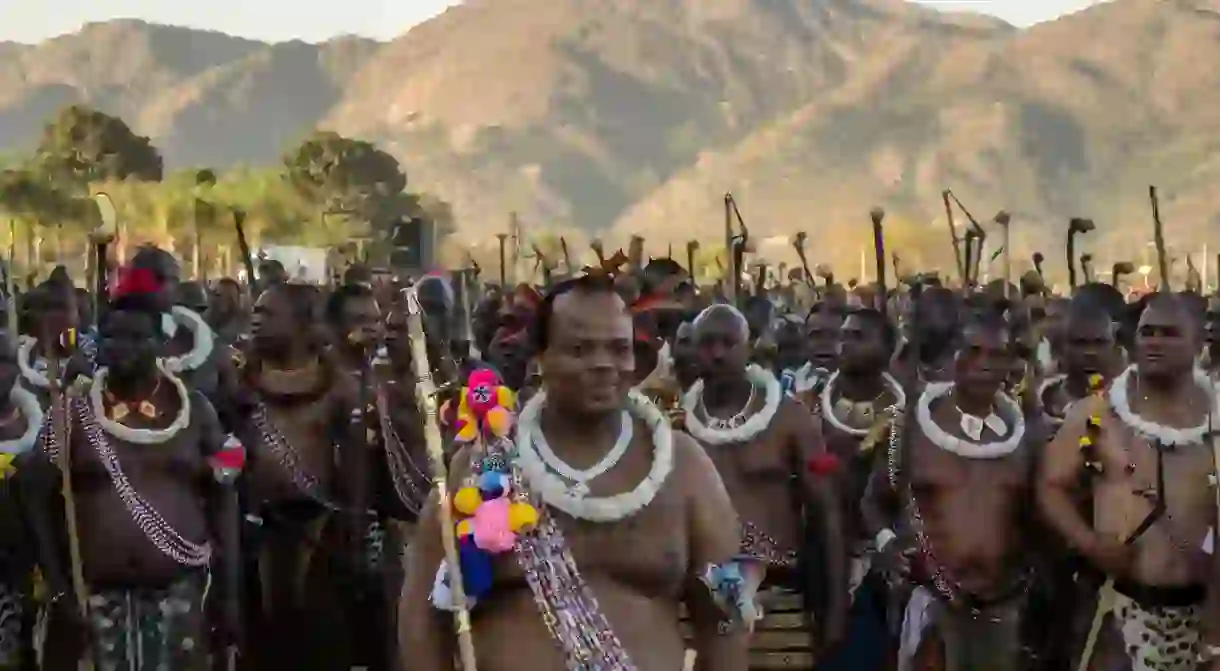Absolute Monarchy: Introducing eSwatini's (Swaziland) Royal Family

King Mswati III of eSwatini (formerly Swaziland) is head of the last absolute monarchy in Africa and one of the few remaining in the world. Take a look at this brief introduction to this fascinating nation’s royal family.
Background
King Mswati III has supreme power to rule the land as he wishes, and his authority is unrestricted and without legal opposition. This was demonstrated in April 2018 when he announced, unexpectedly and without public consultation, that he had changed the name of the country from ‘Swaziland’ to ‘the Kingdom of eSwatini.’ The name change became a key part of eSwatini’s ’50/50 celebrations’, which marked both the King’s 50th birthday and the country’s 50th year of independence.

The family structure
In Swati culture, the king is expected to marry women from various clans across the country to ensure continuing national unity, and King Mswati III is no exception. He has 14 wives, each of whom has at least one child. However, trying to confirm the exact number of his offspring is difficult: in eSwatini, it is not permitted disclose information about the King’s private life, which includes the total number of children he has.
Mswati III’s father, King Sobhuza II was reported to have had hundreds of children and thousands of grandchildren when he passed away in 1982 aged 83. At the time of his death, Sobhuza II was the longest reigning monarch in the world, having ascended to the throne aged just four months. Because he was so young when his father died, Sobhuza’s grandmother, Labotsibeni Mduli, acted as regent until she officially handed her duties over to him in December 1921 when he was 22 years old.
The two most crucial figures in eSwatini’s monarchy are the lion (‘ngwenyama‘ in siSwati language) – aka the King – and the she-elephant (‘ndlovukazi‘): the Queen Mother. They’re so important that they’re depicted on the national coat of arms: a lion and elephant both holding a Swazi shield bearing the king’s crown of feathers above the national motto: ‘We are the fortress’. So, if the heir to the throne is still a minor, the Queen Mother will assume the responsibilities of Regent until he is old enough to take on his duties. At that point, he would become the ‘ngwenyama‘ and his mother the ‘ndlovukazi‘.

This was also the case for the current King, Mswati III, who was attending Sherborne School in England when his father died. Until Prince Makhosetive (as he was then called) returned from his studies to ascend to the throne in 1986, Queen Dzeliwe (Sobhuza II’s wife and Mswati III’s mother) acted as regent.
While his children’s lives are usually kept out of the public eye, the best-known of the King’s offspring is Princess Sikhanyiso. Commonly known as ‘Pashu’, she is the King’s eldest daughter and leads the Umhlanga Reed Dance festival each year. Born in 1987, she has studied in England, America and Australia, and is an aspiring actress and rapper.

The future
The identity of the next monarch is currently unknown because the rules of succession are complex, and a king cannot appoint his successor. Instead, the heir to the throne is chosen based on his mother’s status. Following the King’s death, the Royal Council chooses the new Queen Mother according to her rank and character. She cannot be either of the King’s first two wives who are ‘ritual wives’ chosen for him when he becomes King. Once the Queen Mother has been selected, her son (she cannot have more than one and he must be unmarried) will become the new King and absolute ruler of the monarchy.













